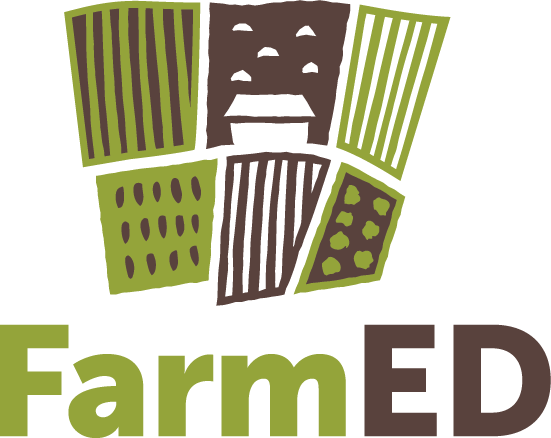Come Foraging at FarmED!
Jun 24, 2025

Sustainable food is central to FarmED’s ethos, with the menu at the farm-to-fork Cafe comprising dishes made with zero miles fruits and vegetables, fresh from the Kitchen Garden and Heritage Orchard. But with the help of foraging expert, Justine Jens of Ma Roemca, visitors can learn how the hedgerows and woodland areas at Honeydale Farm are just as bountiful.
‘I’ve been teaching foraging at FarmED for a couple of years now,’ says Justine. ‘And in that time I’ve seen the hedgerows at Honeydale become so much more abundant. Every year they're just more and more diverse. It’s really beautiful to see because it's a place where people care for the soil and the land and that really shows.’
Earlier this year, Justine led a springtime foraging farm walk around Honeydale. ‘I taught people how to eat raw nettles straight off the stem. We also foraged meadow sweet stem and some hogweed for the juice, which is really tasty. And ground ivy, a lovely herb, somewhere between sage and thyme. There was just so much.’
Justine discovered her love of foraging from a young age. It was her grandparents, in the south of France, who first inspired her with an interest in wild food.
‘My grandfather was a healer and he used to grow his own medicinal herbs,’ remembers Justine. ‘I gained a lot of my basic herbalism knowledge from my grandparents.’
Justine studied to become a mountain guide in the French Alps, which deepened her knowledge of foraging.
‘A big part of the training is preparing you for how to survive in the wild, if you are stranded and I became quite obsessed with noticing the food growing around me. What could I eat?’
Justine quickly realised the joy of passing on her knowledge. ‘As soon as I started learning, I was teaching, just sharing information about the abundance around me.’
She describes falling in love with the English countryside and food, after moving here six years ago. ‘Because it rains here quite a lot, there’s not really a dry season, it's just green all year round.’
She’s looking forward to returning to FarmED in July and then in the Autumn, for mushroom season, when there will be berries, guelder rose and sloes to discover.
‘I set up Ma Roemca because I wanted to make foraging more accessible and the aim of my courses is that people can join with little or no knowledge of foraging and leave with the confidence to forage for themselves. They will learn the absolute key characteristics of an edible plant so they can't get them wrong. I also teach people about look-alikes, so they learn to bring their attention to little differences like the shape of the stem or how the leaves are growing around the stem. After a couple of hours with me, they know what to look for. By the end of the course, people can look around and just identify so many things. There’s a lot they still can’t identify, but the things that they can identify really stand out.’
As well as learning to identify plants to forage, Justine also teaches a few recipes.
‘For me, it's just as important to know what to do with the plants as how to identify them.’
So what might a foraged supper look like?
‘You might have Burdock root fries. Burdock is like a potato, a really good source of carbs. And then maybe stuffed magnolia blossoms, stuffed with wild garlic, lettuce and vegetables.’
Justine also shares details of where to forage.
‘The beauty of my job is that I've been roaming around and meeting so many people, so many landowners. I have access to a lot of land where people are happy for me to forage. At the end of the day, a lot of foraging is about taking the weeds. It’s also important to be mindful of what you forage though, because some plants are rarer than others .’
And you’re never too young to start. The first thing Justine’s son ate were blossom petals. ‘He was born on New Year’s Eve, so by the time he was able to eat solid food, starting at three months old, the cherry blossom was just coming out.’
Justine says it’s given her son, now just over a year old, ‘a very good habit to not just put everything in his mouth. Unlike lots of babies, he knows that not everything he touches is edible.’
Justine enthuses about how foraging is a great way to gain resilience. ‘It’s about learning how to look after yourself rather than relying on buying everything from a shop. That’s really important to me. Showing people how to forage for plants that are going to be good for their health and well-being.’
Would you like to uncover the edible and ecological secrets hiding in the hedgerows, trees and fields around you? Then join Justine for an engaging and tasty foraging walk, to connect with nature and nibble on our abundant wild larder.
Book on our upcoming foraging farm walks...
Recent news items




